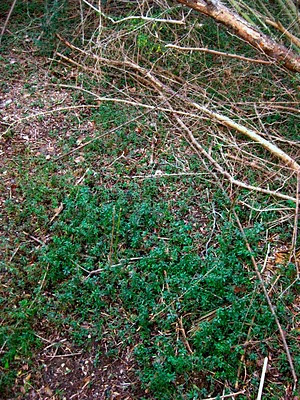 The opening for Make Space: Installation at La Reunion TX is this Saturday, Feb. 27th. With all the rain and snow it has been hard for any of the artists to get out there, but I do have my sculpture sited now, and I have started the framing out of the structure. Above is the concept drawing superimposed at the site.
The opening for Make Space: Installation at La Reunion TX is this Saturday, Feb. 27th. With all the rain and snow it has been hard for any of the artists to get out there, but I do have my sculpture sited now, and I have started the framing out of the structure. Above is the concept drawing superimposed at the site.Sunday, February 21, 2010
Location for the Privet Sculpture Project
 The opening for Make Space: Installation at La Reunion TX is this Saturday, Feb. 27th. With all the rain and snow it has been hard for any of the artists to get out there, but I do have my sculpture sited now, and I have started the framing out of the structure. Above is the concept drawing superimposed at the site.
The opening for Make Space: Installation at La Reunion TX is this Saturday, Feb. 27th. With all the rain and snow it has been hard for any of the artists to get out there, but I do have my sculpture sited now, and I have started the framing out of the structure. Above is the concept drawing superimposed at the site.Saturday, February 20, 2010
The Beam Plank & Flitch proposal for the Henderson Art Project

Thursday, February 18, 2010
Privet, Basic Structure and Seed Distribution


Tuesday, February 16, 2010
Spreading the Seed

Monday, February 8, 2010
Art Statement for SculpCAD Rapid Artists program

With access to the Rapid Cad technology and its incredible array of tools and casting mediums, I instantly had visions of producing my very own version of the “Homer”, a car designed by Homer Simpson that was so outlandishly stuffed with add-ons that it caused the finial collapse of Powell Motors.
So, with that in mind, I have tried to focus on learning how the Rapid Cad program works, and how to blind this technology with my own artistic direction, resulting in a sculpture that breaks new ground and makes historical sense. I have of course spent a lot of time just playing; this program seems to encourage that sort of “what if I do this” activity. In the end I have slipped the Rapid Cad into my normal creative process, which begins with lots of drawing on paper, those are then reprocessed and reprocessed to create a composite drawing “Chicken Neck Johnson”. This drawing is scanned onto the Rapid Cad desktop, where it is fleshed out, manipulated, and reprocessed. The resulting 18” X 18” X 6” sculpture is a composite of shapes that I love working with, plus a humorous animal reference, which I credit to the playful, toy making aspects of the Rapid Cad program.
The sculpture is made from an almost transparent red plastic. The Rapid Cad program has allowed me to shell the sculpture so that it is hollow and very light. The walls vary in thickness, which causes the red color to become more intense in the areas where the plastic is thicker and almost water clear where the walls are thinner. The shelling process has also allowed me to create a bottom heavy counter balance, which allows the neck and head to be extend in an giraffe like appearance with an almost transparent head.Sunday, February 7, 2010
The Privet Sculpture Project: Cutting Research


Friday, February 5, 2010
Art in the District 2010: posting on Art Seek
 Posted a little blurb about the Art In The District 2010 art fair on Art and Seek. Just hoping to get the word out a bit more.
Posted a little blurb about the Art In The District 2010 art fair on Art and Seek. Just hoping to get the word out a bit more.